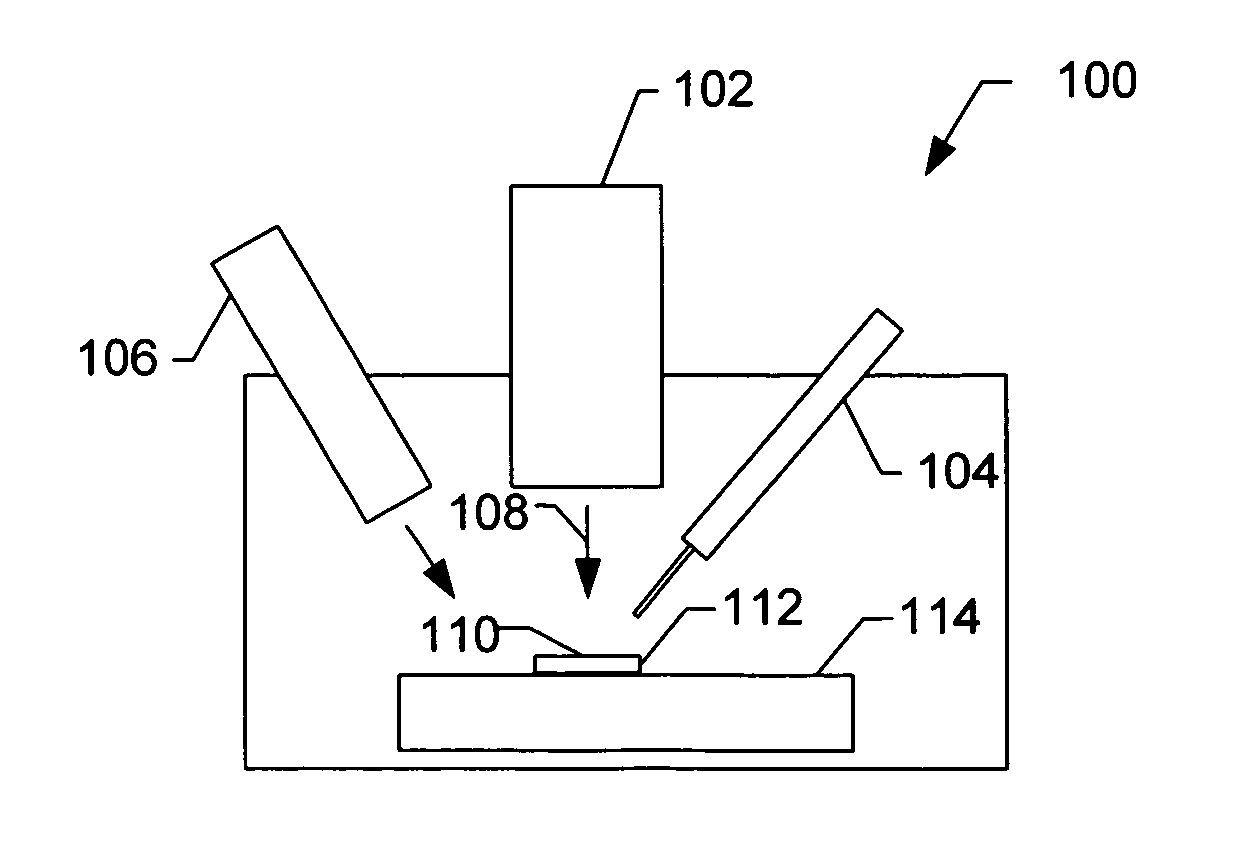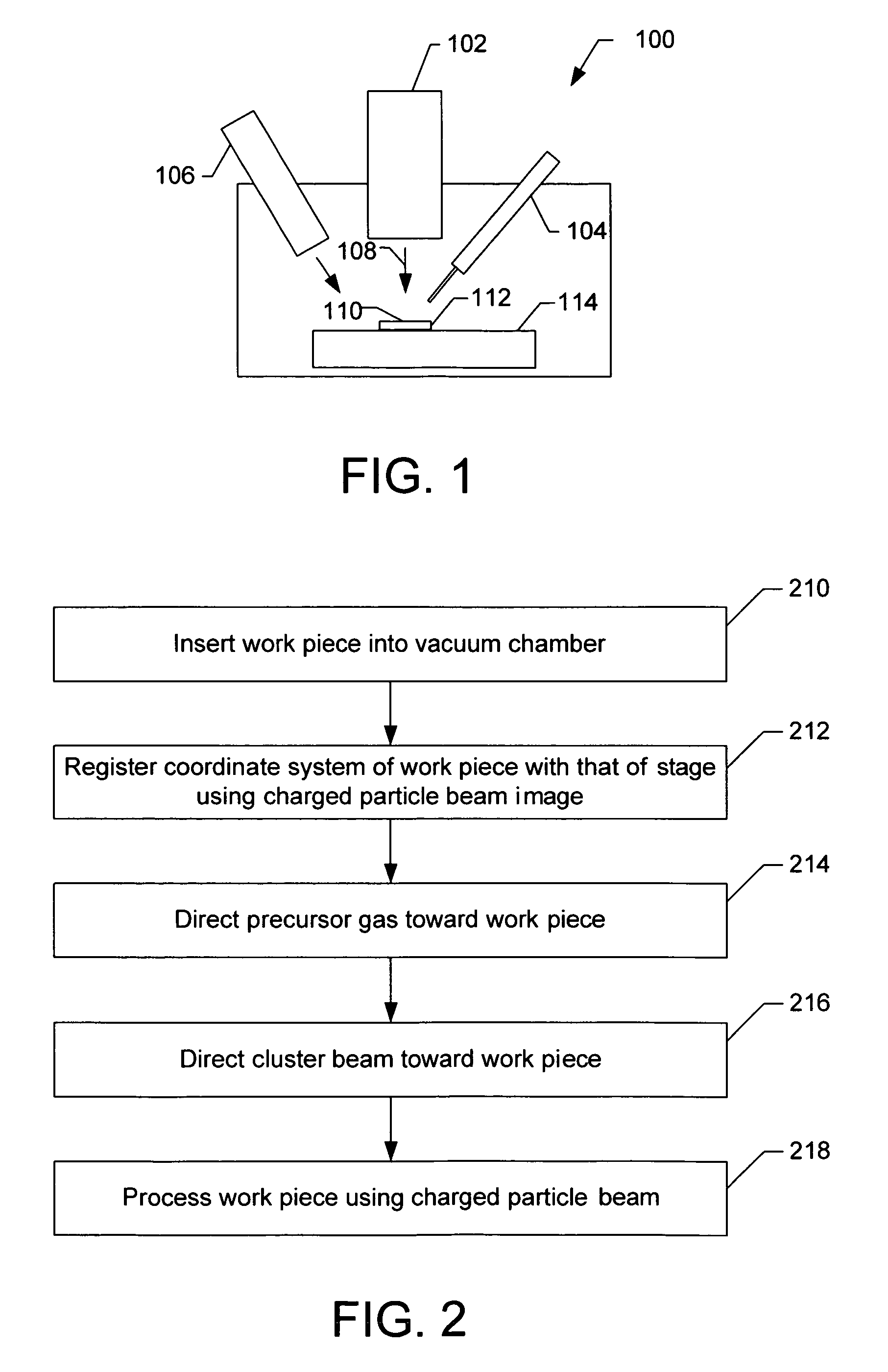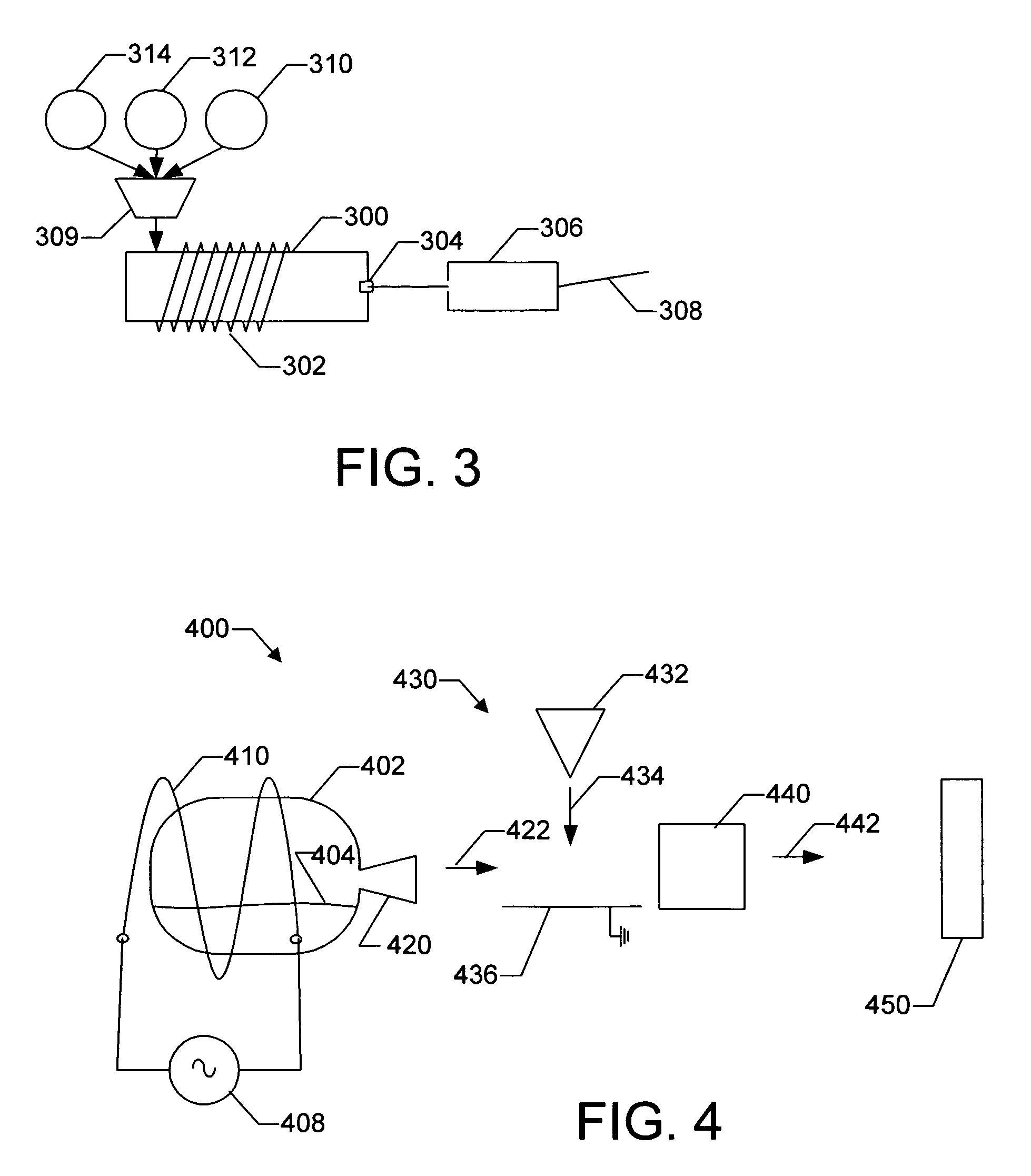Charged particle-beam processing using a cluster source
a charge-beam and particle-beam technology, applied in the field of charge-beam processing, can solve the problems of affecting the surface of workpieces, affecting the workpiece, and the gallium ions are relatively heavy, so as to reduce the damage to the surface
- Summary
- Abstract
- Description
- Claims
- Application Information
AI Technical Summary
Benefits of technology
Problems solved by technology
Method used
Image
Examples
Embodiment Construction
[0025]The following is a detailed description of example embodiments of the invention depicted in the accompanying drawings. The example embodiments are in such detail as to clearly communicate the invention. However, the amount of detail offered is not intended to limit the anticipated variations of embodiments; but, on the contrary, the intention is to cover all modifications, equivalents, and alternatives falling within the spirit and scope of the present invention as defined by the appended claims. The detailed descriptions below are designed to make such embodiments obvious to a person of ordinary skill in the art.
[0026]In some embodiments of the invention, a cluster beam provides energy to decompose a precursor gas to deposit a layer, while minimizing damage to the work piece surface. The cluster beam can also be used to etch the work piece surface, optionally with an etch-enhancing gas. In other embodiments, a cluster beam directly deposits a protective layer for charged part...
PUM
 Login to View More
Login to View More Abstract
Description
Claims
Application Information
 Login to View More
Login to View More - R&D
- Intellectual Property
- Life Sciences
- Materials
- Tech Scout
- Unparalleled Data Quality
- Higher Quality Content
- 60% Fewer Hallucinations
Browse by: Latest US Patents, China's latest patents, Technical Efficacy Thesaurus, Application Domain, Technology Topic, Popular Technical Reports.
© 2025 PatSnap. All rights reserved.Legal|Privacy policy|Modern Slavery Act Transparency Statement|Sitemap|About US| Contact US: help@patsnap.com



